

Fibonacci accidental: fotos de peleas parlamentarias que parecen pinturas renacentistas « Pijamasurf - Noticias e Información alternativa. Hace poco se viralizó en Twitter una imagen tomada del Facebook del artista James Harvey.

La foto muestra una de las tan usuales peleas en el parlamento ucraniano. Y mientras es una imagen horrible para los fans de la democracia, es hermosa a un nivel puramente estético. Golden ratio - Buscar con Google. Fibonacci - Buscar con Google.
Definiciones y conceptos - RAZONES Y PROPORCIONES. Fibonacci Sacred Geometry. ANTHROPOMETRY AND BIOMECHANICS. Volume I, Section 3 {A} For a description of the notations, see Acceleration Regimes.

This section contains the following topics: 3.1 Introduction 3.2 General Anthropometrics & Biomechanics Related Design Considerations 3.3 Anthropometric and Biomechanics Related Design Data See the video clips associated with this section. 3.1.1 Scope. Vitruvian Man - Wikipedia, the free encyclopedia. The Vitruvian Man, Italian: Le proporzioni del corpo umano secondo Vitruvio, is a drawing created by Leonardo da Vinci circa 1490.[1] It is accompanied by notes based on the work of the architect Vitruvius.
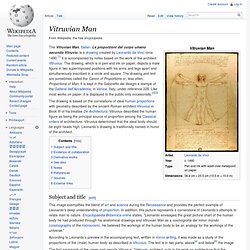
The drawing, which is in pen and ink on paper, depicts a male figure in two superimposed positions with his arms and legs apart and simultaneously inscribed in a circle and square. The drawing and text are sometimes called the Canon of Proportions or, less often, Proportions of Man. It is kept in the Gabinetto dei disegni e stampe of the Gallerie dell'Accademia, in Venice, Italy, under reference 228. Like most works on paper, it is displayed to the public only occasionally.[2][3] The drawing is based on the correlations of ideal human proportions with geometry described by the ancient Roman architect Vitruvius in Book III of his treatise De Architectura. Subject and title[edit] ACTIVIDADES. PARTE 2. TU Delft - DINED. Theory - Monoskop.
Arquitectura Arkinetia - Le Corbusier - Modulor - La proporción áurea en arquitectura. Le Corbusier escribió varios libros en los que expuso sus ideas en forma complementaria a sus propios proyectos.
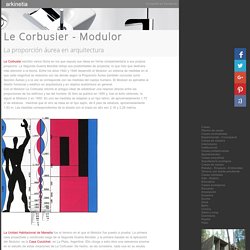
La Segunda Guerra Mundial redujo sus posibilidades de proyectar, lo que hizo que dedicara más atención a la teoría. Entre los años 1942 y 1948 desarrolló el Modulor, un sistema de medidas en el que cada magnitud se relaciona con las demás según la Proporción Áurea (también conocida como Sección Áurea) y a la vez se corresponde con las medidas del cuerpo humano.
El Modulor es aplicable al diseño funcional y estético en arquitectura y en objetos anatómicos en general. Con el Modulor Le Corbusier retomó el antiguo ideal de establecer una relación directa entre las proporciones de los edificios y las del hombre. El libro se publicó en 1950 y, tras el éxito obtenido, le siguió el Modulor 2 en 1955. La Unidad Habitacional de Marsella fue el terreno en el que el Modulor fue puesto a prueba. Body proportions - Wikipedia, the free encyclopedia. While there is significant variation in anatomical proportions between people, there are many references to body proportions that are intended to be canonical, either in art, measurement, or medicine.
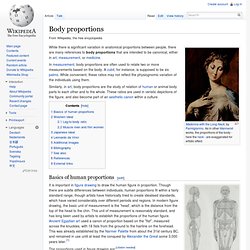
Similarly, in art, body proportions are the study of relation of human or animal body parts to each other and to the whole. These ratios are used in veristic depictions of the figure, and also become part of an aesthetic canon within a culture. Leon Battista Alberti - Wikipedia, the free encyclopedia. Leon Battista Alberti[1] (February 14, 1404 – April 25, 1472) was an Italian humanist author, artist, architect, poet, priest, linguist, philosopher and cryptographer; he epitomised the Renaissance Man.
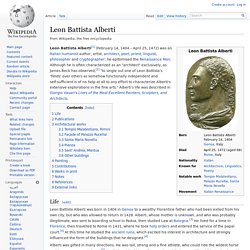
Although he is often characterized as an "architect" exclusively, as James Beck has observed,[2] "to single out one of Leon Battista's 'fields' over others as somehow functionally independent and self-sufficient is of no help at all to any effort to characterize Alberti's extensive explorations in the fine arts. " Alberti's life was described in Giorgio Vasari's Lives of the Most Excellent Painters, Sculptors, and Architects. Life[edit] Leon Battista Alberti was born in 1404 in Genoa to a wealthy Florentine father who had been exiled from his own city, but who was allowed to return in 1428. Alberti was gifted in many directions. His first major architectural commission was in 1446 for the facade of the Rucellai Palace in Florence.
Anthropometry - Wikipedia, the free encyclopedia. The field of ergonomics employs anthropometry to optimize human interaction with equipment and workplaces.
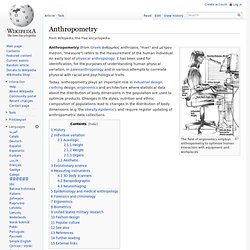
Anthropometry (from Greek άνθρωπος anthropos, "man" and μέτρον metron, "measure") refers to the measurement of the human individual. Golden ratio - Wikipedia, the free encyclopedia. Line segments in the golden ratio In mathematics, two quantities are in the golden ratio if their ratio is the same as the ratio of their sum to the larger of the two quantities.
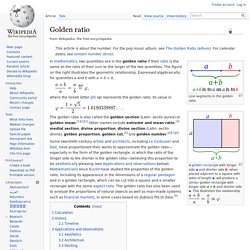
The figure on the right illustrates the geometric relationship. FICHA DIDÁCTICA. Dined - 3D Data. When designing products it seems logical to include three dimensional body measurements.
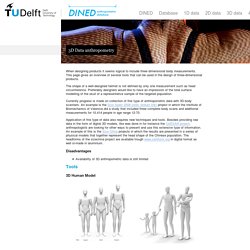
This page gives an overview of several tools that can be used in the design of three-dimensional products. The shape of a well-designed helmet is not defined by only one measurement such as head circumference. Preferably designers would like to have an impression of the total surface modelling of the skull of a representative sample of the targeted population. Currently progress is made on collection of this type of anthropometric data with 3D body scanners. An example is the Size Spain 2008 (note: broken link) project in which the Institute of Biomechanics of Valencia did a study that included three complete body scans and additional measurements for 10.414 people in age range 12-70.